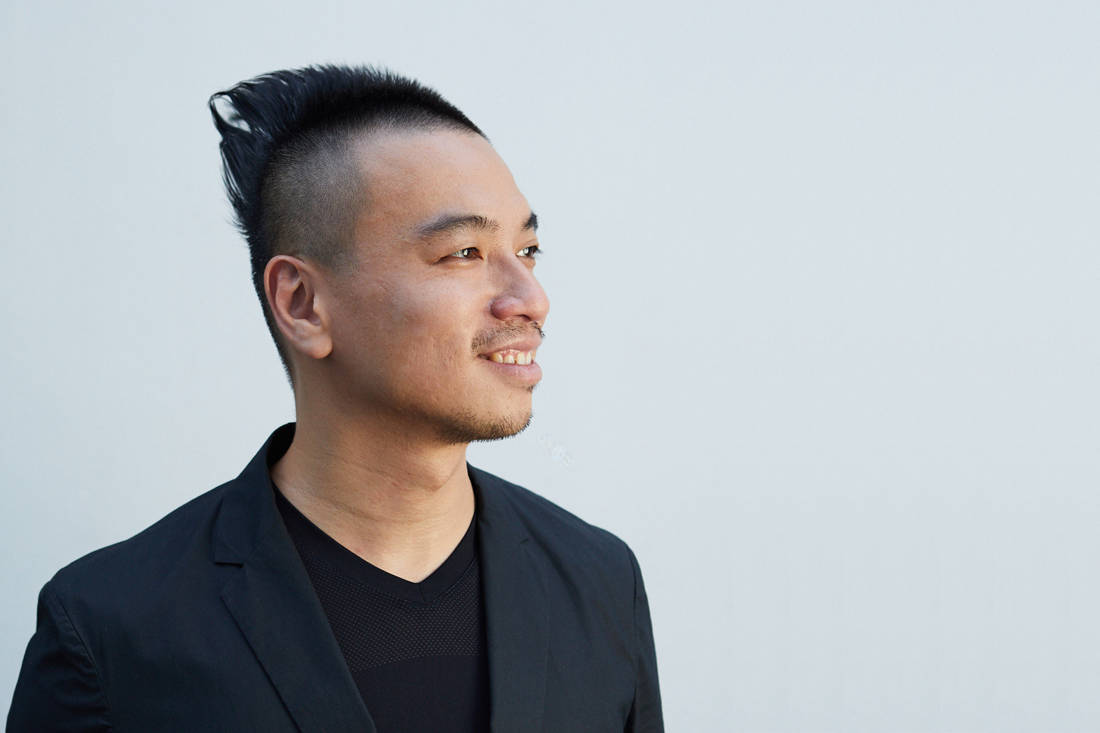In the age of social media, does form still follow function or is it vice versa? The narrative has always stayed the same for architect Quck Zhong Yi of ASOLIDPLAN.
10 October 2019
Text by Vanitha Pavapathi
Quck Zhong Yi, a Partner at award-winning studio ASOLIDPLAN, is of the belief that good spatial design is vital for human relationships. Context – site, time and people – is perhaps the most important force driving his design process.

Apertures by ASOLIDPLAN. Photo by Fabian Ong
Every one of his projects thus reveals a unique intersection of one or more persons in a specific place and time. It’s no surprise that original designs are born out of this philosophy. One of Zhong Yi’s innovative designs includes a brass privacy screen for a ground floor apartment in Tiong Bahru, which has become an eye-catching feature in the neighbourhood.
This problem-solving creative will be lending his insightful perspective to our Saturday Indesign ‘Design Conversations’ series as a speaker in our residential-focused session, ‘Innovative Strategies for HDB and Apartments’.
Ahead of the session on 12 October, we caught up with Zhong Yi to find out more about his views on residential design.

Two things that struck me after working in Singapore was how strict the Parisian urban design regulations are, and how laborious the submission processes can be. The strict urban regulations have contributed to the making of a beautiful city, but also led to its museumification.
There are many design principles that can be analogous across all scales: sensitivity to human scale, line of sight, moments, dialogue between forms, textures, colours, et cetera. Switching between these scales has been helpful in our design work.
For example, for the 2018 National Day Parade stage, we used colour-picking of the Marina Bay environment to create the palette for the stage painting – something that we got used to doing in residential interiors – resulting in a stage that sat harmoniously in the bay, making the bay part of the stage.

National Day Parade stage 2018 by ASOLIDPLAN. Photo by Fabian Ong
Spatial design is about designing for people (sometimes plants and animals too). Lines, planes, forms, textures, and colours have meaning only when used or interpreted by people.
At the urban level, streetscape scale and design can bring strangers together, or tear neighbours apart. At the domestic scale, a couple’s relationship can sometimes be improved by optimising visibility between spaces while giving enough privacy.
In the office, spatial layout and acoustics affect mood, concentration, and hence interpersonal relationships.

The Holey Moley by ASOLIDPLAN. Photo by Food & Shelter
A good project is one that makes everyone happy and is done beautifully. An outstanding project is all of that, plus an ability to spark further conversations and ideas.
It’s exciting. Clients are increasingly discerning, while designers are constantly innovating. New media channels are also making it easier for designers to have a kind of ongoing design conversation with our works. New technology like smart home systems are also making us rethink certain aspects of design. We should also start to see more projects addressing the inevitable issue of climate change.

Squaring A Triangle by ASOLIDPLAN. Photo by Food & Shelter
Respond to context and client needs, and good design will naturally follow.
Saturday Indesign, being one intense day of events and talks, is an opportunity for designers to have constructive face-to-face conversations, and for the public to better understand designers beyond social media and publications.
We think you may also like 20 things to see and do at Saturday Indesign
Like what you just read? Similar articles below

See how these old walk-up apartments in Singapore have been superbly transformed into unique and unforgettable living spaces.

Respected names in the industry came together to discuss the factors shaping the business of interior design at a recent Lookbox Living x King Living design conversation. Here’s what they had to say.